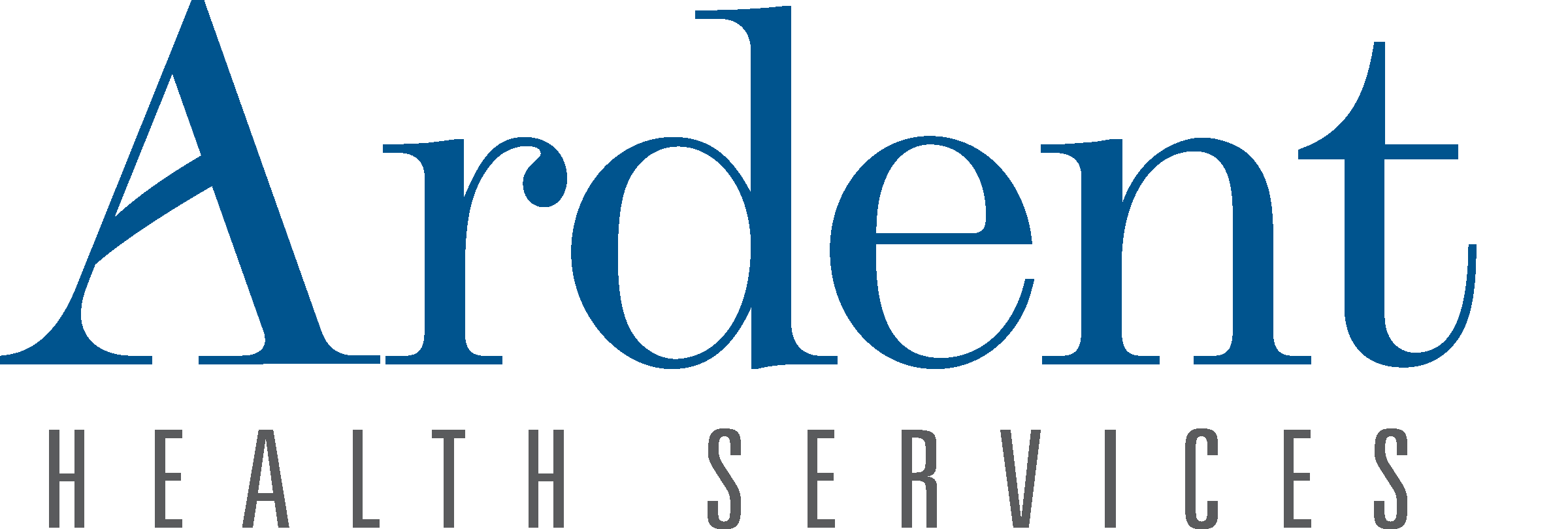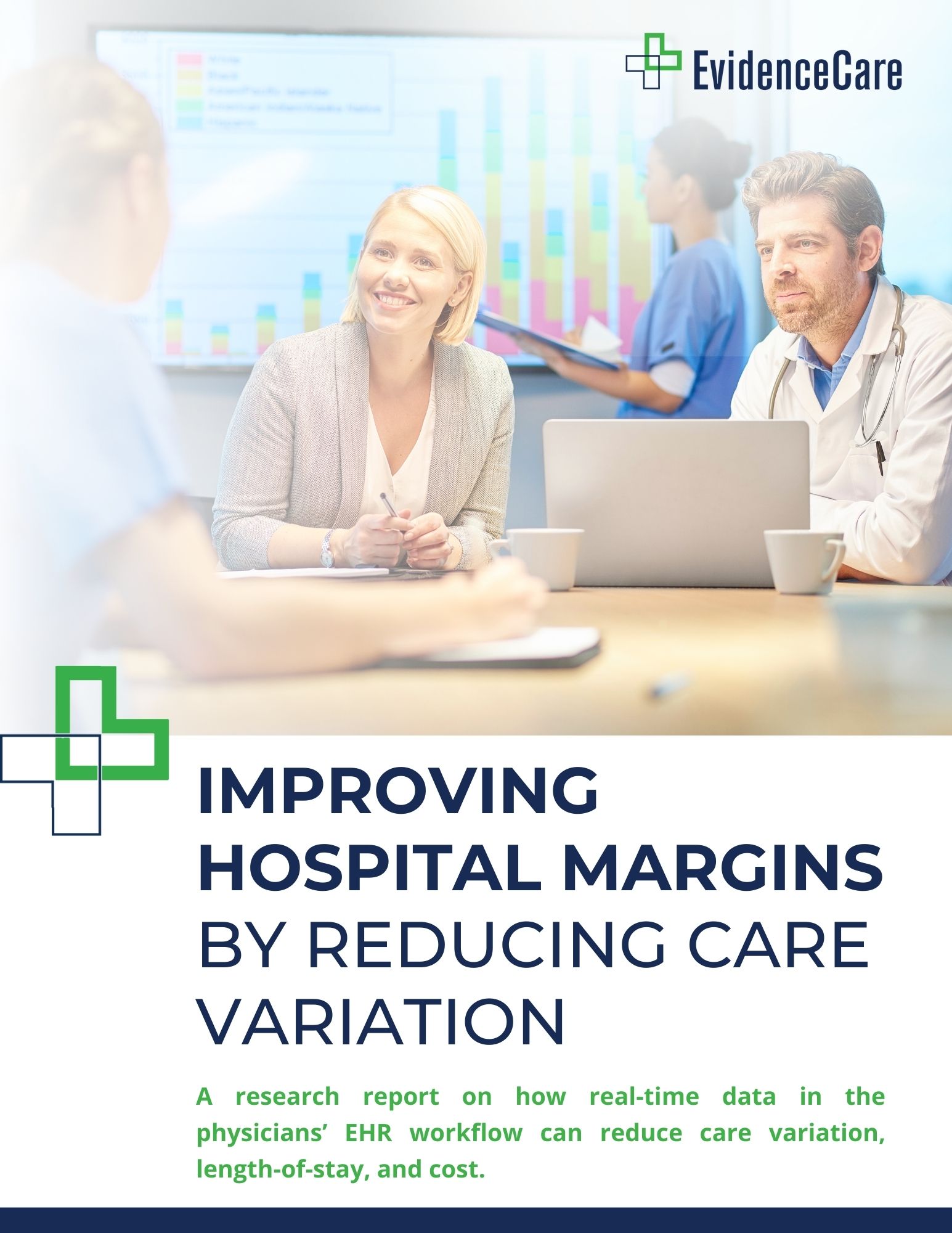Patients and health systems deserve clinicians thriving and operating at their best to deliver quality care.
CDSS That Improves Margins and Quality
EvidenceCare's clinical decision support platform is EHR-agnostic and content-agnostic with a focus on empowering better care decisions and improving hospital margins.
Doctors don’t need more invasive technology.
They need the right information at the right time.
Our products are designed with our end-users in mind for optimized clinical workflows.

Trusted by Top Health Systems
Want to learn more first?
We’ve got you covered.
Reducing Costs and Improving the Quality of Healthcare
For any society to thrive, a robust healthcare system is essential. While the US healthcare system is acutely advanced and innovative, it has one major drawback; it’s expensive.
According to data, the US spends more than any other nation when it comes to healthcare spending in relation to the proportion of the economy. For instance, 17.7% of the gross domestic product in 2018 went to healthcare. This was nearly double what other OECD countries spent, without a significant difference in healthcare quality.
Furthermore, healthcare costs are rising, profoundly affecting patients, providers, and the overall healthcare system. For starters, restricted access to care and delays in care can cause prices to increase significantly. This then subjects to financial hardships due to expensive insurance premiums, out-of-pocket costs, and rising medical debt.
From a provider’s perspective, the effects of rising healthcare costs include difficulty providing patients with comprehensive treatment, diminishing available resources, and increasing administrative obligations.
Therefore, investigating methods for cutting costs and while focusing on healthcare quality improvement is essential. In so doing, significant advantages may be attained, beginning with enhanced accessibility and affordability of healthcare.
Also, by embracing evidence-based medicine, healthcare professionals may improve clinical procedures and prioritize therapies that have been successful and cost-effective. In addition to improving hospital quality and patient outcomes, this reduces the need for pointless and expensive treatments.
Reduce the Cost of Healthcare without Compromising Patients’ Health and Safety
As a healthcare provider, developing policies to reduce healthcare costs is essential. While this is important, it should not be done in a way that compromises patients’ health and safety.
Although it’s not easy, reducing costs while upholding the highest levels of patient care and safety by coordinating cost-saving strategies with patient requirements, the standard of care, and value-based healthcare concepts is possible.
Embracing Value-Based Healthcare
Adopting value-based healthcare is a great way to lower healthcare expenses without sacrificing patient care. It involves delivering high-quality treatment oriented to patient needs, and quality results are the primary goal of this strategy.
You can streamline processes, cut out pointless tests or procedures, and boost overall efficiency by refocusing on the value and efficacy of their services rather than the number of those they provide. Value-based healthcare encourages an all-encompassing approach to patient care, which ensures funds are deployed wisely to optimize results while controlling expenses.
Implementing Evidence-Based Practices
Adopting evidence-based procedures is a crucial component of cost-cutting without sacrificing patient care. To inform healthcare decisions, evidence-based medicine integrates the best available information, clinical knowledge, and patient preferences.
Healthcare organizations may prevent needless and expensive treatments and guarantee that patients receive adequate and efficient care using evidence-based standards and practices. Along with enhancing patient safety, offering treatment based on scientifically verified procedures also lowers costs.
Enhancing Care Coordination and Communication
Effective care coordination and communication are vital in reducing costs without compromising patient care. By improving collaboration among healthcare providers, optimizing workflows, and enhancing information sharing, healthcare organizations can minimize redundancies and errors, leading to cost savings.
The prompt and accurate transmission of information through streamlined communication channels ensures that patient care is well-coordinated and prevents needless duplication of services. While ensuring patient safety and care quality, this increases the overall effectiveness of the delivery of healthcare services.
Leveraging Technology and Data Analytics
Without sacrificing patient care, you can reduce healthcare costs through technology and data analytics to reduce healthcare expenses. These include electronic health records (EHRs), telehealth platforms, and data analytics tools that increase productivity, optimize resource use, and spot areas where costs can be cut.
Such solutions allow healthcare professionals to automate workflows, streamline administrative procedures, and find ways to offer treatment more effectively by utilizing technology. They do so by identifying cost drivers and trends. As a result, it enhances your decision making allowing you to implement focused interventions to increase cost-effectiveness without compromising patient safety or service quality.
Strategies to Reduce Healthcare Costs
There are various ways to manage the growing cost of healthcare and achieve the objective of lowering healthcare expenses while enhancing the quality of care. These tactics seek to maximize resource use, eliminate waste, and encourage effective and efficient care delivery.
Some of the strategies and benefits of reducing healthcare costs include:
1. Promoting Healthcare Cost Transparency
The first step towards reducing healthcare costs is promoting healthcare cost transparency. This gives patients clarity as they can compare prices between different providers allowing them to make more informed decisions. Also, transparent pricing encourages healthy competition among service providers, benefiting patients and the healthcare system.
2. Embracing Preventive Care and Population Health Management
Another efficient method of lowering healthcare expenses is investing in preventative care and population health management. You can save money by emphasizing illness prevention, early intervention, and proactive treatment of chronic disorders.
Vaccinations, screenings, and lifestyle changes are examples of preventive care practices that can aid in the early detection of health problems when they are more easily managed and less expensive to cure. Healthcare organizations can decrease long-term healthcare consumption and related costs by improving population health and addressing social determinants of health.
3. Streamlining Administrative Processes
Streamlining administrative processes is one of the key cost-reduction strategies for healthcare organizations. It allows you to allocate resources more efficiently and reduce administrative costs, which helps reduce overall costs. Some of the strategies you can use to achieve this include electronic health record (EHR) data interoperability, automated workflows like hospital admission documentation, and other clinical decision support technology.
How to Reduce Healthcare Costs in Hospitals
As the healthcare landscape evolves, leveraging new technologies is vital for lowering healthcare expenses.
Here are some of the ways to control the rising cost of healthcare:
1. Optimizing Electronic Health Record Systems (EHRs)
EHR system optimization can improve information sharing between healthcare professionals, facilitate data administration, and eliminate the need for paper-based records and outdated clinical workflows.
This results in improved care coordination, reduced medical errors, and more efficient workflows. By digitizing patient information, hospitals can enhance productivity, reduce administrative costs, and avoid unnecessary duplicate tests or procedures.
2. Leveraging Telehealth and Remote Monitoring
Telehealth and remote monitoring technologies offer significant cost-saving opportunities for hospitals. These technologies enable virtual consultations, remote patient monitoring, and home-based care. Hospitals may minimize the demand for in-person visits, cut readmission rates, and maximize resource usage by utilizing telehealth.
The proactive treatment of chronic illnesses, early identification of health problems, and prompt interventions made possible by remote monitoring all help to save costs and improve patient outcomes.
3. Adopting Data Analytics and Predictive Modeling
Data analytics tools and predictive modeling give hospitals meaningful information so they may decide wisely, streamline processes, and allocate resources efficiently. Hospitals can spot trends, patterns, and inefficiencies in delivering care by studying massive databases.
This enables proactive identification of high-risk patients, readmissions prediction, and care pathways optimization. By leveraging predictive modeling, hospitals can identify cost drivers, forecast resource needs, and implement targeted interventions to reduce costs while maintaining the quality of care.
4. Utilizing Automation and Robotics
Automation and robotics technologies offer opportunities for cost reduction and operational efficiency within hospitals. You can automate medication dispensing, inventory management, and repetitive administrative processes, reducing errors, improving accuracy, and freeing up staff to focus on direct patient care.
Robotics can assist in surgical procedures, enhancing precision and reducing the length of hospital stays. By leveraging automation and robotics, hospitals can optimize resource utilization, improve patient flow, and minimize costs associated with manual processes.
5. Enhancing Interoperability and Care Coordination
Interoperability and care coordination are critical for reducing healthcare costs in hospitals. Implementing interoperable systems allows hospitals to seamlessly share patient information across different healthcare settings, improving care coordination, and avoiding unnecessary duplication of tests or procedures.
This reduces costs associated with redundant services and facilitates better-informed clinical decision-making. Enhanced care coordination also contributes to preventing adverse events, reducing hospital readmissions, and improving patient outcomes.
What Are Some of the Most Prevalent Cost Reduction Strategies in Healthcare Organizations?
In the quest to reduce healthcare costs and improve the quality of care, healthcare organizations are adopting innovative ways to reduce healthcare costs. In this regard, EvidenceCare is a powerful CDSS that can significantly contribute to cost reduction by providing cost transparency, clinical decision support, and care variation management.
Here’s how EvidenceCare can help you:
1. Cost Transparency and Value-Based Care
EvidenceCare offers cost transparency software that enables healthcare organizations to gain insight into the cost of different medical procedures, tests, and length of stay. This information empowers healthcare providers to make informed decisions and discuss cost options with patients.
It incorporates cost transparency into the care delivery process, helping healthcare organizations to work towards outcomes-based healthcare and optimizing the balance between cost and quality outcomes.
2. Care Variation Management
EvidenceCare’s care variation software helps organizations identify and address unwarranted care variations. The tool analyzes data and identifies patterns providing healthcare institutions with the insight to standardize care protocols and reduce unnecessary variations in practice.
This reduces costs associated with inconsistent care delivery and ensures patients receive the most appropriate and cost-effective treatments based on evidence-based guidelines.
3. Streamlining Hospital Admission Workflows and Enhancing Efficiency
With an integrated platform streamlining workflows, EvidenceCare enhances operational efficiency for admitting providers and utilization management teams. It provides the admission criteria for bed statuses to admitting providers and hospitalists at the point of care in the EHR – eliminating countless hours of rework and interruptions by UR staff.
In turn, you can dedicate more time and resources to direct patient care as practitioners can work more efficiently and save money.
4. Clinical Decision Support for Clinical Pathways
Another notable feature you’ll enjoy with EvidenceCare is its clinical decision support tools designed to provide evidence-based recommendations at the point of care. It leverages the latest medical research and guidelines, enabling healthcare providers to make more informed decisions, leading to better outcomes and potentially avoiding unnecessary tests, procedures, or treatments.
5. Real-Time Access to Evidence-Based Medicine
EvidenceCare provides real-time access to evidence-based medicine, allowing healthcare providers to stay updated with the latest research and guidelines. This promotes delivering high-quality, cost-effective care by ensuring that treatments and interventions are aligned with current best practices.
While enabling healthcare providers to stay informed and make evidence-based decisions, EvidenceCare contributes to cost-reduction and revenue-increasing efforts while improving patient outcomes.
When it comes to cost-cutting and improving healthcare standards, EvidenceCare is the ideal solution. It offers a holistic solution that helps healthcare professionals make wise decisions, provide value-based care, and maximize resource use through cost transparency, clinical decision support, care variation management, and optimized workflows.
Capitalize on EvidenceCare’s robust features today to enhance your quality of care while reducing costs.
















